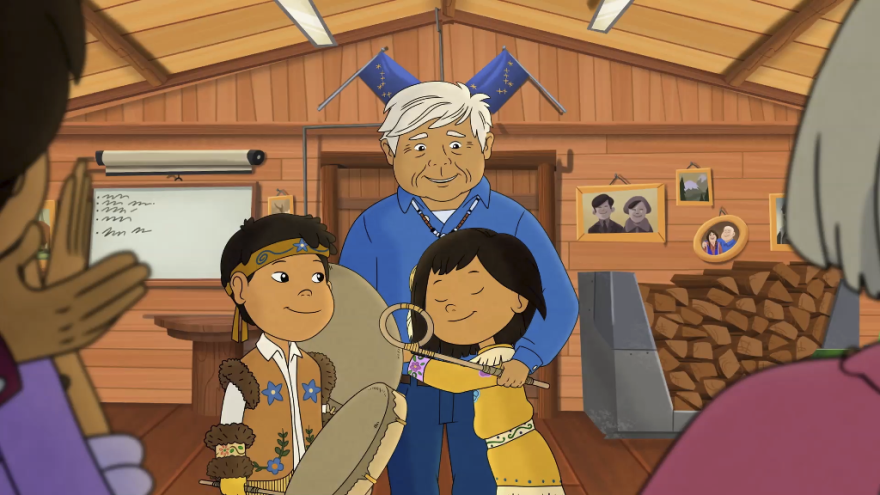The first nationally broadcast children's show with an Alaska Native lead character premiered today.
Molly of Denali is a production of Boston public TV station WGBH and features 10-year-old Athabascan Molly Mabray and the fictional Interior village of Qyah.
Show co-creator Dorothea Gillim of WGBH knew from the get-go that she wanted to make a kids show about an outdoorsy girl who lived in a more rural setting. When brainstorming ideas, Alaska was all over the news.
"So when we were looking for a place to set the store, we thought Alaska," Gillim said. "And we very quickly realized we'd have to partner with Alaska Natives to tell the story right."
Those partnerships touch every part of the show's production. Molly of Denali features Indigenous writers, cultural advisors and voice actors. Even the theme song was sung by two members of the Native music group Pamyua. Band member Phillip Blanchett is originally from Bethel and of Yup'ik descent. He says every move made during the show's production had to get the OK from the Native advisors.
"I'd been able to see some of the storylines and some of the earlier versions of episodes," Blanchett said. "And if there was something that was a little bit questionable about the authenticity of how it was done, it would be addressed."
Blanchett says that even extended to the theme song, which initially was written with a more generic Indigenous sound instead of being specifically Athabascan, like Molly.
"It was like (sings) 'Molly of Denali.' And then it had the breakdown, which was like, 'Ay yah. Ay yah,'" Blanchett said. "It had something like that, and that's where we immediately like, 'Athabascans don't say Ay yah.' I mean they can. (laughs) But they won't. They don't in their singing. They have a different language and it's a different style of dancing."
That attention to authenticity extends throughout the village of Qyah, where Molly spends her days helping her parents run the Denali Trading Post, hanging out with her friends Tooey and Trini and running her blog where she teaches viewers about living in Alaska. Molly also gets the opportunity to learn about her Native roots. An early episode shows Molly getting the Athabascan name "Shahnyaa" from her great auntie.
It means "one who informs us."
The name holds significance because while a prominent theme of the show is Alaska Native culture, the educational aspect of the show deals with information gathering.
"She looks at diagrams and pictures and all sorts of ways to gleam information that help her solve real life problems," WGBH's Gillim said, "like how do you get a moose off the runway so you can land, or how do you make bug spray when you forgot bug spray at home?"
Tlingit and Muckleshoot teenager Sovereign Bill voices Molly and says she often didn't see accurate representation in movies and TV shows growing up.
"It’s been very hard for Native Americans all throughout history, so this is a step forward and this is a step of revitalization of our culture as well," Bill said.
While the show serves as a window into the life of a modern Indigenous family, including learning various Native words, it includes broader stories about living in Alaska, with episode topics like canoe racing and planting massive vegetables.
As the show launches, parents can expect the theme song to stay in their head, while kids can latch onto Molly's catchphrase, "Mahsi’ Choo," the Gwich'in word for "Thank you."





